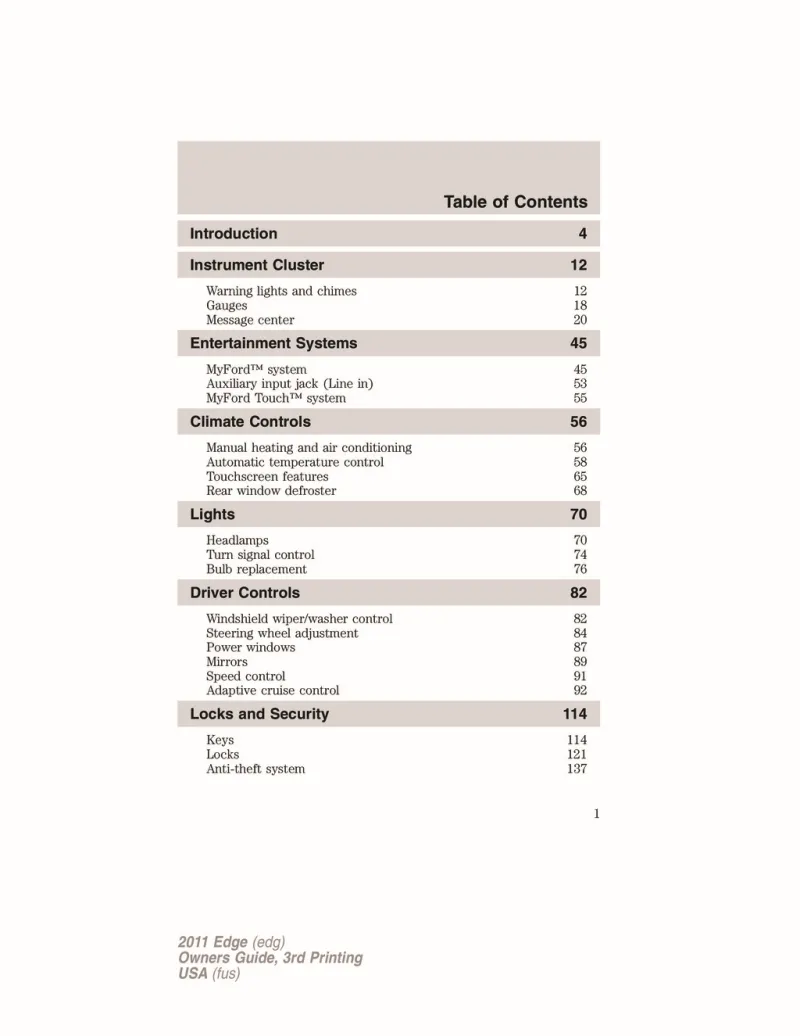2011 Ford Edge Owner's Manual

Table of Contents
2011 Ford Edge Overview
Introduction
Introducing the 2011 Ford Edge, a mid-size crossover SUV that elegantly blends style, comfort, and performance. With its bold design and spacious interior, the Edge caters to families and individuals seeking a reliable vehicle with modern features. Ideal for both city driving and weekend getaways, this versatile SUV delivers an enjoyable driving experience, making it a popular choice among automotive enthusiasts.
Powertrains
The 2011 Ford Edge comes equipped with two powerful engine options to suit diverse driving needs. The standard 3.5-liter V6 engine produces a robust 280 horsepower, ensuring confident acceleration and responsiveness on the road. For those seeking a more fuel-efficient ride, the Edge is available with a 2.5-liter four-cylinder engine paired with a hybrid system, achieving impressive fuel economy without sacrificing performance. Both engines are mated to a six-speed automatic transmission, providing smooth gear transitions and an effortless drive.
Trims
The 2011 Ford Edge offers a selection of well-appointed trims, including SE, SEL, Limited, and Sport. The base SE trim provides essential features for everyday comfort, while the SEL adds enhanced tech and convenience elements. The luxurious Limited trim boasts premium materials and cutting-edge technology, making it perfect for those who prioritize sophistication. For a sportier edge, the Sport variant includes a more powerful engine and sport-tuned suspension for an exhilarating driving experience.
Features
This crossover is packed with an array of features to enhance convenience and entertainment. With options such as Ford’s SYNC infotainment system, available navigation, premium audio systems, and a rearview camera, the 2011 Edge keeps you connected and safe on the road. Additionally, spacious cargo room, comfortable seating, and advanced safety features make this SUV a practical choice for families.
Owner's Manual
The owner's manual for the 2011 Ford Edge is an invaluable resource that provides comprehensive information about vehicle operation, maintenance schedules, and troubleshooting tips. It guides owners in understanding the various features and capabilities of their vehicle, ensuring they make the most of their Edge experience while promoting longevity and performance.
User manual download
The Ford Edge owner manual for the 2011 model year is to be found in PDF downloadable format on this page. The owner manual for the model year 2011 is free and in English, but the repair manuals are usually not easy to get and may cost more.
Manual Questions
Fill the form below and someone will help you!

